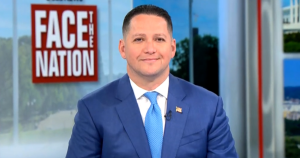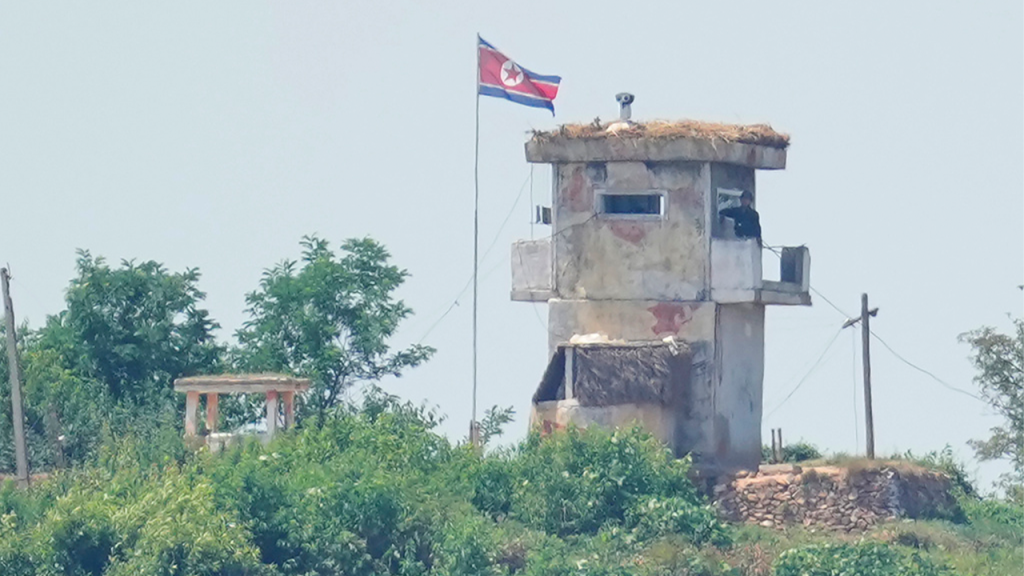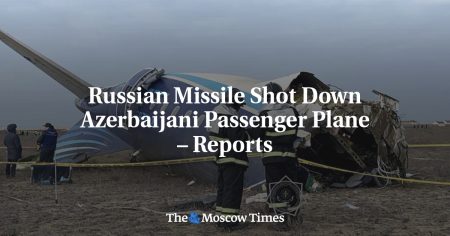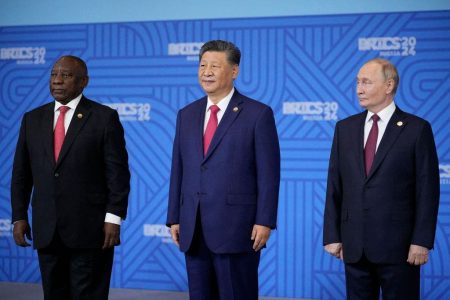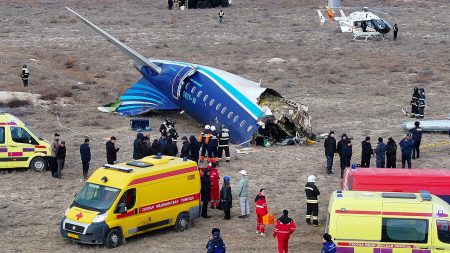In the hours leading up to the U.S. election, North Korea fired at least one ballistic missile into the eastern sea, sparking concerns about the country’s capabilities and intentions. It remains uncertain whether the missile was launched alone or as part of a larger operation, and the type of missile and its range are also unknown. This launch came shortly after North Korean leader Kim Jong Un oversaw a test of the country’s newest intercontinental ballistic missile, which is capable of reaching the U.S. mainland. In response, the United States conducted a show of force with a long-range B-1B bomber in a joint drill with South Korea and Japan, aiming to demonstrate military readiness.
North Korea claimed that the Hwasong-19 missile tested was the strongest in the world, but experts have noted limitations in its design that may render it ineffective in a wartime scenario. The country still lacks critical technologies necessary for a functional ICBM, such as ensuring the survival of the warhead during re-entry into the atmosphere. South Korean officials have warned that North Korea may increase its military displays around the U.S. election to draw attention from Washington. Recent reports suggest that North Korea may be preparing for its seventh nuclear test, adding to the growing tensions in the region.
Tensions between North and South Korea have escalated in recent months, with Kim Jong Un flaunting his expanding nuclear and missile programs while providing support to Russia in its conflict with Ukraine. In response to the growing threats from North Korea, South Korea, the United States, and Japan have been strengthening their military cooperation and updating their nuclear deterrence plans. Military exercises involving U.S. strategic assets have been expanded to respond to the evolving security situation. The geopolitical dynamics in the region are complex, with multiple countries vying for power and influence.
The uncertainty surrounding North Korea’s missile capabilities and intentions has raised concerns among neighboring countries and the international community. The ongoing military displays and nuclear tests by North Korea have heightened tensions in the region, prompting joint military drills and deterrence measures by South Korea, the United States, and Japan. The implications for global security are significant, as North Korea’s actions continue to pose a threat to stability in the Asia-Pacific region. The response to these provocations will likely involve a combination of diplomatic efforts and military readiness to prevent further escalation.
The latest missile launch by North Korea underscores the challenges of dealing with a regime that is determined to develop advanced weapons capabilities despite international sanctions and pressure. The lack of transparency in North Korea’s military activities and intentions adds to the uncertainties surrounding the security situation in the region. Efforts to engage with North Korea diplomatically have been met with limited success, as the regime remains committed to its militaristic agenda. The role of China and Russia in mediating the crisis will be crucial in finding a peaceful resolution to the tensions in the Korean Peninsula.
As the U.S. election unfolds, the situation with North Korea adds another layer of complexity to the global security landscape. The incoming U.S. administration will need to address the challenges posed by North Korea’s nuclear and missile programs while navigating the broader geopolitical dynamics in the region. The potential for miscalculation and escalation remains high, highlighting the importance of diplomatic efforts to defuse tensions and prevent conflict. The international community will need to work together to find a sustainable solution to the North Korean crisis and ensure peace and stability in the Asia-Pacific region.




